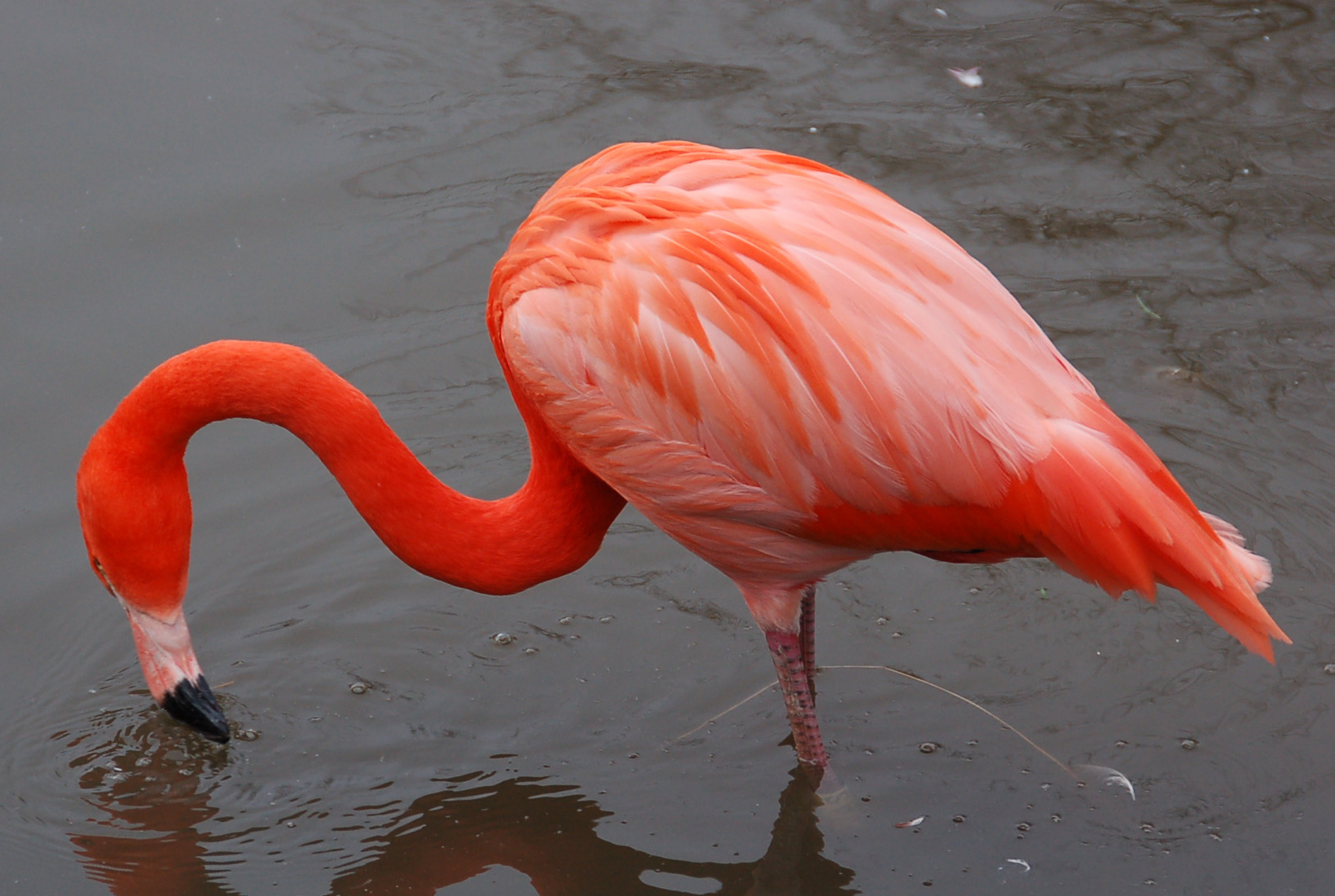
A. Social structure.
1. Flamingos are very social birds.
Breeding colonies of a few individual flamingos are rare
while colonies of tens of thousands of birds are common.
2. In zoological parks, flock size ranges from 2 to 340 birds with an average of 71 birds.
B. Social behavior.
1. Flamingos devote considerable time to collective displays before, during, and after breeding.
2. Several hundred to several thousand flamingos are all involved
simultaneously with ritualized postures
and movements to synchronize breeding.
3. Sometimes only one display is performed, but more often
a predictable sequence of displays are carried out: head-flag, wing-salute, and twist-preen.
a. Head-flag involves stretching the neck and head up as high as
possible with the bill pointing upwards, and then rhythmically turning
the head from one side to the other.
b. Wing-salute is performed by spreading the wings for a few seconds, showing their strikingly contrasted colors, while the tail is cocked and neck outstretched.
c. Twist-preen entail the bird twisting its neck
back and appearing to preen quickly, with its bill behind a partly open wing.
C. Individual behavior.
1. Flamingos spend most of the day feeding, preening (using the bill to distribute oil from a gland at the base of their tail to their feathers for waterproofing), resting, and bathing.
2. Breeding birds feed day or night. Non-breeding birds feed at night and spend the day sleeping or involved in comfort activities, such as bathing.
3. Flamingos spend about 15% to 30% of their time during the day preening.
This is a large percentage compared to waterfowl,
which preen only about 10% of the time.
Flamingos preen with their bills.
An oil gland near the base of the tail secretes oil
that the flamingo distributes throughout its feathers.
4. Flamingos swim readily and bathe in shallow fresh water submerging the whole body.
D. Interaction with other species.
Two or more species of flamingos can coexist in the same area at the same time.
1. Flamingos are very social birds.
Breeding colonies of a few individual flamingos are rare
while colonies of tens of thousands of birds are common.
2. In zoological parks, flock size ranges from 2 to 340 birds with an average of 71 birds.
B. Social behavior.
1. Flamingos devote considerable time to collective displays before, during, and after breeding.
2. Several hundred to several thousand flamingos are all involved
simultaneously with ritualized postures
and movements to synchronize breeding.
3. Sometimes only one display is performed, but more often
a predictable sequence of displays are carried out: head-flag, wing-salute, and twist-preen.
a. Head-flag involves stretching the neck and head up as high as
possible with the bill pointing upwards, and then rhythmically turning
the head from one side to the other.
b. Wing-salute is performed by spreading the wings for a few seconds, showing their strikingly contrasted colors, while the tail is cocked and neck outstretched.
c. Twist-preen entail the bird twisting its neck
back and appearing to preen quickly, with its bill behind a partly open wing.
C. Individual behavior.
1. Flamingos spend most of the day feeding, preening (using the bill to distribute oil from a gland at the base of their tail to their feathers for waterproofing), resting, and bathing.
2. Breeding birds feed day or night. Non-breeding birds feed at night and spend the day sleeping or involved in comfort activities, such as bathing.
3. Flamingos spend about 15% to 30% of their time during the day preening.
This is a large percentage compared to waterfowl,
which preen only about 10% of the time.
Flamingos preen with their bills.
An oil gland near the base of the tail secretes oil
that the flamingo distributes throughout its feathers.
4. Flamingos swim readily and bathe in shallow fresh water submerging the whole body.
D. Interaction with other species.
Two or more species of flamingos can coexist in the same area at the same time.























